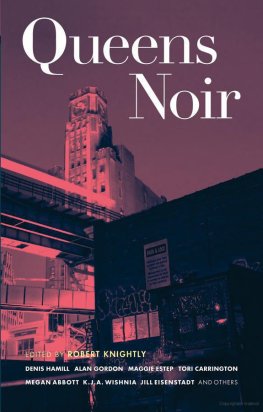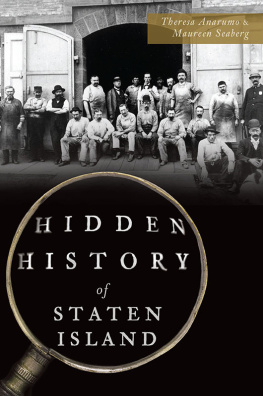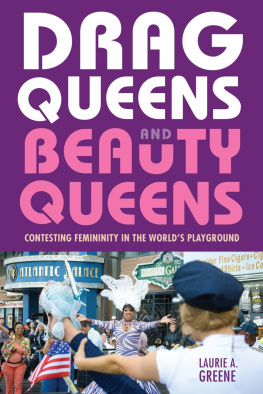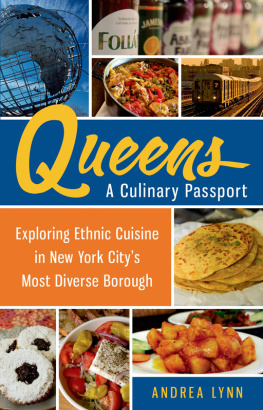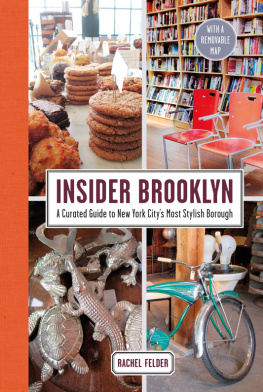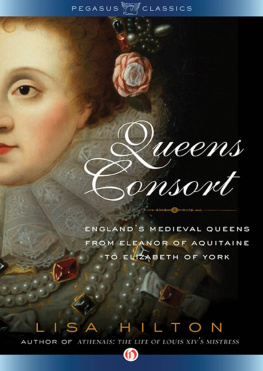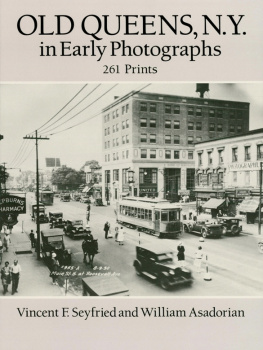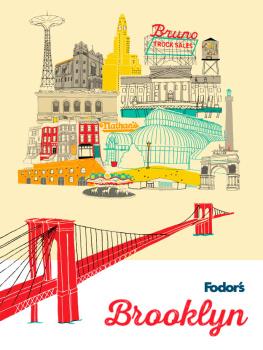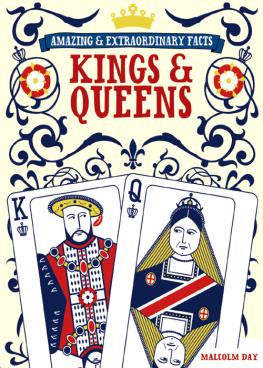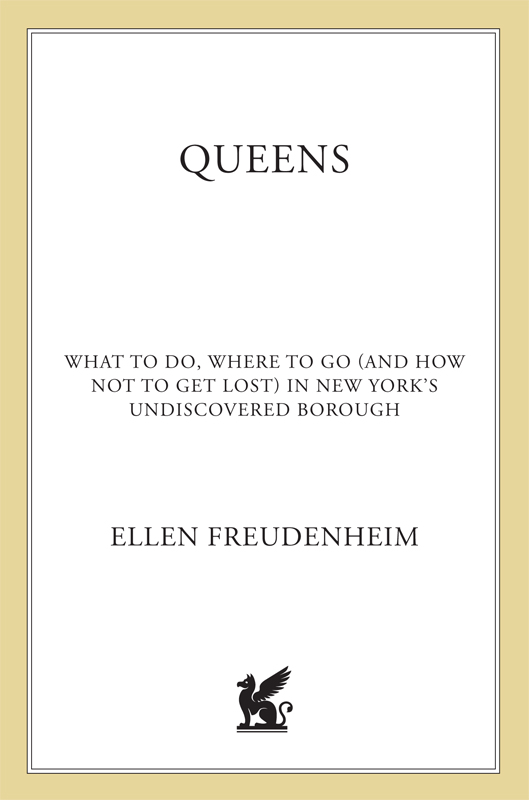
The author and publisher have provided this e-book to you for your personal use only. You may not make this e-book publicly available in any way. Copyright infringement is against the law. If you believe the copy of this e-book you are reading infringes on the authors copyright, please notify the publisher at: us.macmillanusa.com/piracy.
Contents
D EDICATED TO D ANIEL P . W IENER,
MY LOVE AND LIFE COMPANION,
ON THE OCCASION OF ( FINALLY !) TURNING 50
M ARCH 7, 2006
Acknowledgments
I would like to say a special thank-you to many people, but first and foremost to those who took time out of their busy lives to write the short personal essays that flavor this book: Christine Alcalay, Irving Chipkin, Michael Cogswell, Jim Driscoll, Alanna Heiss, Stacy Kim, Max Lance, Morgan Meis, James L. Muyskens, and Stu Nitekman.
Thanks also to many people who shared their perspectives on Queens with me: the Honorable Helen Marshall, Queens Borough President, and Dan Andrews, Seth Bornstein, and Terri Osborne of the Queens Borough Presidents Office; Nancy Cataldi, Richmond Hill Historical Society; Colby Chamberlain, P.S. 1; Mary Ceruti and Katie Farrell, SculptureCenter; Stanley Cogan, historian; Andreia Davies, Queens Council on the Arts; Noah Dorsky, Dorsky Gallery Curatorial Programs; Jim Driscoll, Queens Historical Society; Tom Finkelpearl, Queens Museum of Art; Tom Gaynor, U.S. Post Office; Mary Howard, NY Designs; Andrew Jackson, Langston Hughes Community Library and Cultural Center; Daniel Karatzas, Jackson Heights historian; Theodore Levin, Dartmouth University; Alison McKay, Bayside Historical Society; Janel Patterson, New York City Economic Development Corp.; Elizabeth Roistacher and John Devereux, Queens College; Hal Rosenbluth and Elaine Ferranti, Kaufman Astoria Studio; Jeffrey Rosenstock, Queens Theater in the Park; Bob Singleton, Greater Astoria Historical Society; Rochelle Slovin, Museum of the Moving Image; Jennifer Ward Souder, Queens Botanical Gardens; David Strauss, Debra Wimpfheimer, and Blagovyesta Momchedjikova, Queens Museum of Art; Carol Sudhalter, musician; Dana Rubenstein and Gina Masullo of New York City Parks and Recreation; Maria Terrone at Queens College, and a bevy of PR and communications staff. The many shopkeepers, restaurateurs, fellow subway riders, and others I spoke briefly with were also very helpful and open, if bemused by the nature of my task. Thank you!
Im grateful to my cadre of Queens spies: Lesley Achitoff, Katherine Bendo, Linda Casper, Lauren Chung, Steve Feldheim, Alan B. Goldberg, Susan Gregg, Peter Lerangis, Linda Nasshan, Jordan Novet, Margaret Benczak Porter, Jenna Sangostiano, Cindy Sherling, Marilyn Schorr, and Josh Weiss. To those who joined me for a meal or trek through Queens, thanks so much.
Id like to express my appreciation for diligent fact-checking to Aileen Torres, Kristy Davis, and Marlene Naanes, and to Kathleen Kingsbury for fact-checking and reporting. It was fun to swap discoveries with John Roleke, online guide on About.coms Queens site, whose contributions on religious institutions and Jamaica enriched the book. Id also like to acknowledge Mark Stonehill and my reliable bar spy, Seth Kennedy, for their respective contributions to the manuscript.
Hats off to Tom Mercer and the entire St. Martins Press team, as well as mapmaker David Lindroth.
I learned a great deal from the Web sites and publications of the Queens Borough President, Queens historical societies, the Queens Chamber of Commerce, local Queens newspapers, along with major dailies and many institutional and neighborhood-specific Web sites, as well as the anecdote-rich (see Recommended Web Sites).
No doubt I have overlooked some individuals or sources; to those whose names Ive omitted because of space constraints (or memory loss), a heartfelt thank-you as well.
Welcome to Queens


Introduction
QUEENS: ALL THIS
Queens is New Yorks own terra incognita, a huge uncharted territory right here within our own urban enclave. Experiment for yourself. Ask any Manhattanite whether they ever go to Queensor even know where it is. Many will vaguely wave a hand eastward. Others will say sure, they go to baseball games at Shea Stadium, or they will describe an urban adventure to an ethnic restaurant, usually the Jackson Diner. Business travelers might say that if going to JFK and LaGuardia airports counts, they go to Queens all the time.
Underrated and overlooked for too long, the truth is, theres a ton to see and do in Queens for other New Yorkers and tourists alike. You can find something new every time you gowhether youre poking around the Asian shops in Flushing, tracking down Mae Wests drinking haunt in Richmond Hill, biking in Forest Park, or attending performances of Latin dance at the Thalia Theater. One measure of the value of a place as a destination is whether it gets more or less interesting the more you visit; in Queens you can keep peeling layer after layer. Admittedly, it can be frustrating to find your way around (and its no big secret that everyone does get lost occasionally in Queens, which is why weve included a chapter called Getting to and Around Queens). But for people who want to see the real New York, Queensunderstated, upside down, and quirky as hellis a knockout.
Were it to secede from New York City today, Queens would be the fourth-largest city in America. Its a huge place full of interesting neighborhoods. About 120 languages are spoken in Queens; one of the top ten is a language few have even heard of: Tagalog, spoken in the Philippines. Queens officials claim that it is the most ethnically diverse county in the United States. Imagine if the pieces of a giant jigsaw puzzle of the worlds cultures were tossed around in a bowl and randomly spilled out in a borough of New Yorkwell, thats Queens.
Visitors can enjoy an amazing array of authentic ethnic food in both restaurants and groceries. It goes without saying that along with the Chinese, Korean, Thai, Peruvian, Argentinean, Colombian, Romanian, Russian, Polish, and Filipino immigration, among others, there is excellent and cheap Chinese, Korean, Thai, Peruvian, Argentinean, Colombian, Romanian, Russian, Polish, and Filipino food, along with the usual New York standards of Italian, Irish, Jewish-style, and so on. And thats just for appetizers.
There are major cultural institutions here, including several outstanding contemporary art museums, such as P.S. 1 and the Fisher Landau Center, which anchor a very interesting art scene in Long Island City. Queens has more parkland than any other borough, as well as miles of Atlantic Ocean beach and a National Wildlife Refuge in Jamaica Bay. You can drive along the waterfront under the Throgs Neck Bridge and feel light-years away from Manhattan. If you are shopping for unusual gold jewelry, saris, antique chandeliers, or the latest in Latino or Indian music, this is the place to go.
Idiosyncratic, jumbled-up Queens grabs at your heartstrings and even makes you laugh. Its a source of some mirth that there are more dead than living people in Queens. As anyone whos driven here knows, there are miles and miles of graves. More than 3 million souls are buried in about two dozen cemeteries. Graves are woven into the landscape; you see them along the highways, across from schools, and next to a gas station. Whether its the constant reminder of mortality or some other factor, in general, Queens is a humble, not showy place, a middle- and working-class haven. Its a place where people are just living modest lives. Except, of course (theres always a but when generalizing about Queens), that Donald Trump grew up here, too.


